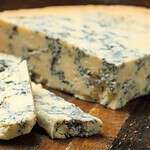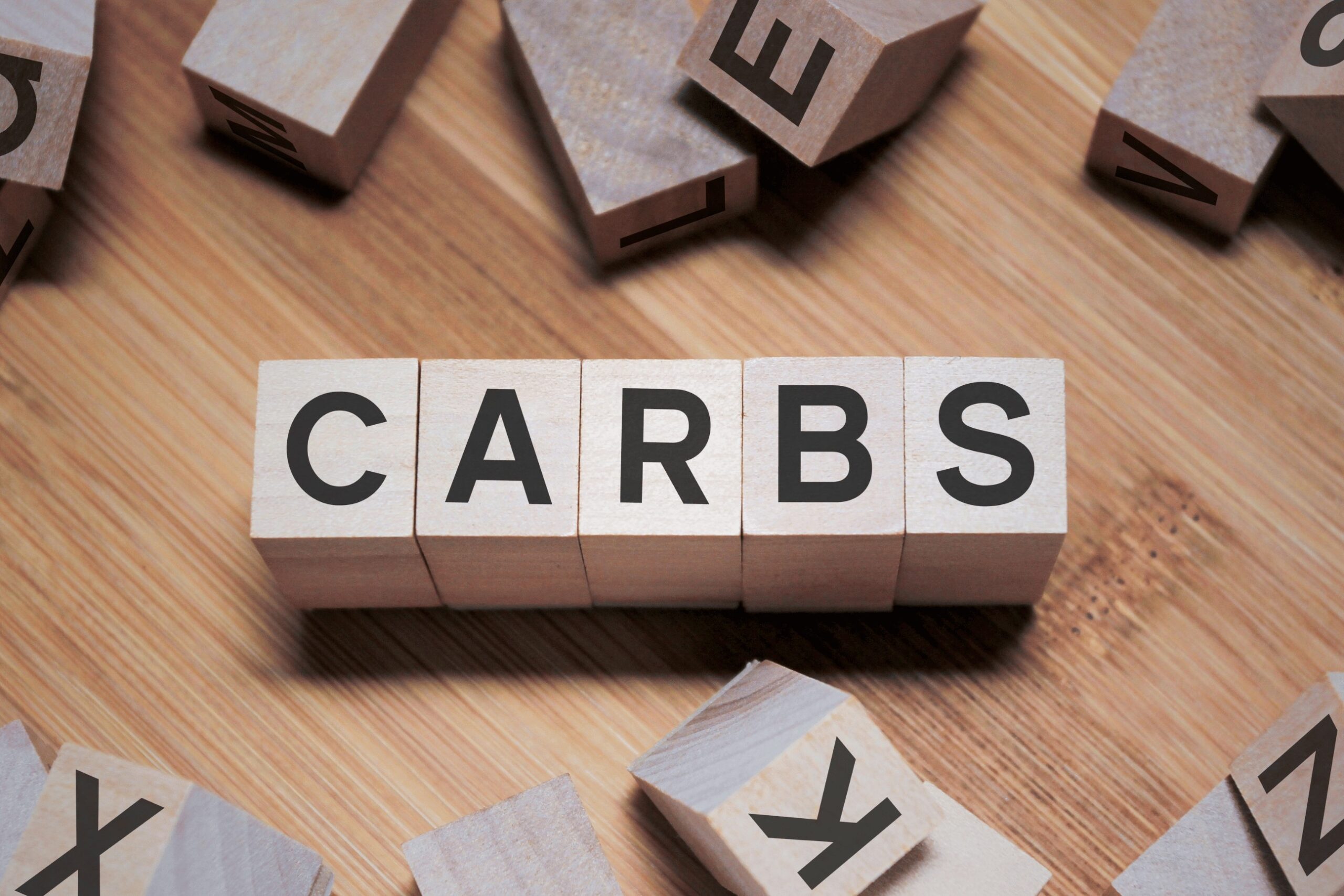Cheese, a beloved staple in many diets, often comes with a reputation for being high in fat, particularly saturated fat, which can contribute to higher levels of LDL cholesterol, the “bad” kind that’s linked to an increased risk of heart disease. It’s important for those managing their cholesterol levels to be mindful of their cheese consumption, as different varieties of cheese can have varying effects on heart health. However, this does not mean all cheese must be avoided; certain types can be included in a balanced diet.
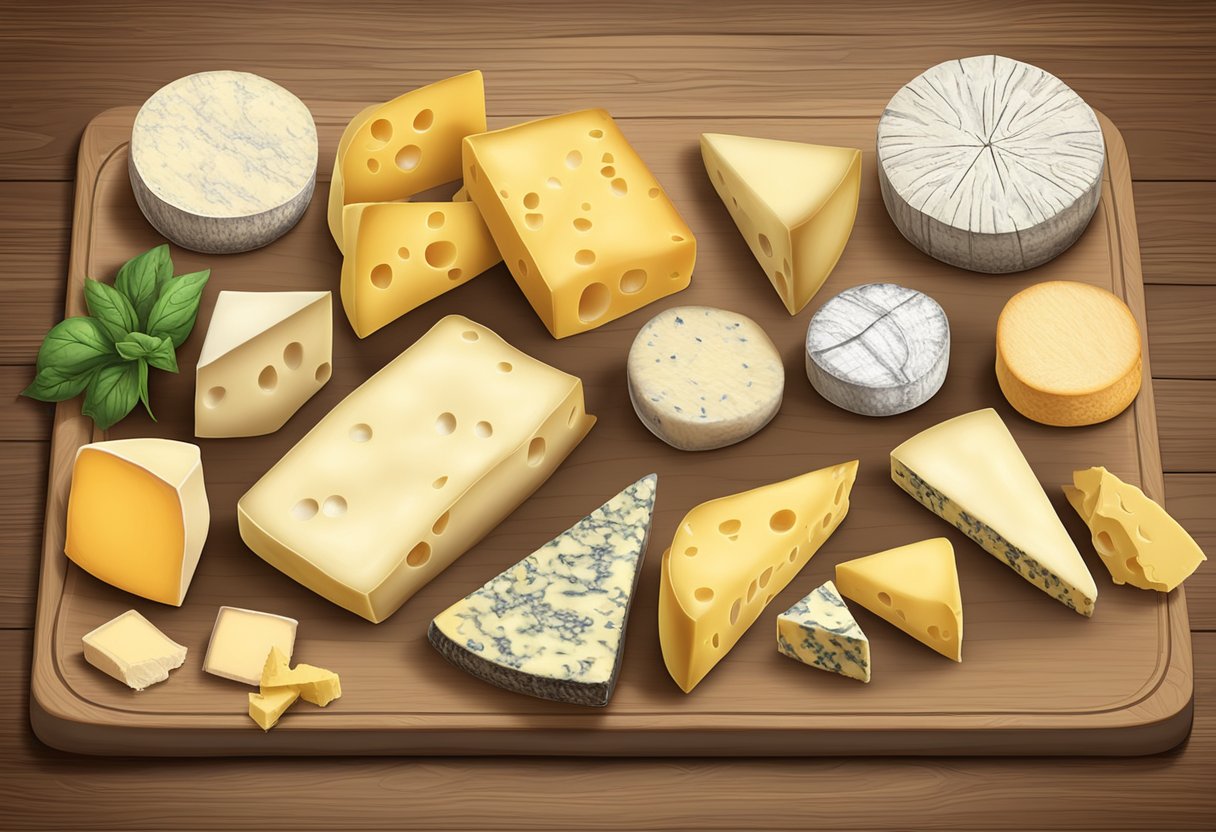
We understand that making dietary choices to support heart health doesn’t have to be an exercise in deprivation. It’s possible to enjoy cheese while being conscious of its impact on cholesterol. Some cheeses are lower in fat and can be part of a heart-healthy diet, especially when combined with a broader lifestyle that includes regular physical activity and other nutritious foods. Knowledge of which cheese varieties to choose and how to incorporate them into your diet can play a significant role in managing your overall health and well-being.
Key Takeaways
- Certain cheese types can be included in a cholesterol-conscious diet.
- A balanced approach to eating and lifestyle can favorably impact heart health.
- Cheese can offer nutritional benefits when consumed in moderation.
The Impact of Cholesterol on Heart Health
Cholesterol plays a critical role in heart health, impacting the risk of heart disease and stroke. We’ll examine the connection between cholesterol levels and cardiovascular disease, and identify the main risk factors for high cholesterol.
Understanding Cholesterol and Heart Disease
Cholesterol is a fat-like substance in our blood, which is essential for building cells and producing certain hormones. However, high levels of low-density lipoprotein (LDL) cholesterol, often termed “bad” cholesterol, can lead to atherosclerosis. This condition is characterized by the buildup of cholesterol plaques in our arteries, which can reduce or block blood flow.
-
Good vs. Bad Cholesterol: Not all cholesterol is detrimental. High-density lipoprotein (HDL) cholesterol is often labeled as “good” cholesterol because it helps remove other forms of cholesterol from our bloodstream.
-
Atherosclerosis: When LDL cholesterol is high, plaque forms on the artery walls, narrowing the passages and increasing the risk of blockages that can lead to heart attacks or strokes.
In our discussion, we recognize that maintaining balanced cholesterol levels is crucial to prevent the development of cardiovascular disease.
Identifying Risk Factors for High Cholesterol
Several risk factors contribute to high blood cholesterol levels, which in turn can increase the risk of developing heart disease. It is important for us to identify and manage these factors proactively:
- Diet: Foods high in saturated fat, such as fatty cuts of meat and full-fat dairy products, can increase blood cholesterol levels.
- Lifestyle: Lack of physical activity and smoking can lower HDL cholesterol and raise LDL cholesterol.
- Genetics: Some of us may be genetically predisposed to producing excessive amounts of cholesterol.
By understanding these risk factors, we can take steps towards a heart-healthy lifestyle, which includes managing diet, increasing physical activity, and quitting smoking. Monitoring and controlling blood pressure is another integral aspect of reducing the risk of heart-related complications.
Cheese and Cholesterol
When considering heart health, it’s important for us to understand the impact of different types of cheese on our cholesterol levels due to their varying fat contents.
Types of Cheese and Their Fat Content
Cheese is a diverse category of dairy product that can have varying effects on cholesterol due to its fat composition, particularly the levels of saturated fat. Saturated fat is known to raise low-density lipoprotein (LDL) cholesterol, which is often dubbed as ‘bad cholesterol’ because it can lead to plaque buildup in arteries.
Here are some common cheeses and their fat content:
| Cheese Type | Total Fat (g) | Saturated Fat (g) | Protein (g) |
|---|---|---|---|
| Cheddar | 33 | 21 | 25 |
| Parmesan | 29 | 19 | 38 |
| Swiss | 28 | 18 | 27 |
| American Cheese | 28 | 18 | 18 |
| Mozzarella | 22 | 13 | 28 |
| Goat Cheese | 21 | 14 | 22 |
| Blue Cheese | 29 | 18 | 21 |
| Feta | 21 | 15 | 14 |
| Cottage Cheese | 4 | 2.3 | 11 |
| Ricotta (low-fat) | 10 | 6 | 14 |
Cheeses like cottage cheese, ricotta, and especially the versions labeled as low-fat or fat-free, tend to have lower saturated fat content and are thus better options for those monitoring their cholesterol levels.
Cheese Alternatives for Lowering Cholesterol
For individuals aiming to lower their cholesterol, we recommend exploring cheese alternatives or modifying cheese consumption in the following ways:
- Opt for low-fat or fat-free cheeses: These products have less saturated fat and therefore are a better choice for heart health. Low-fat mozzarella, fat-free cheddar, and low-fat Swiss are a few examples.
- Use plant-based cheese alternatives: These products are often made from nuts, soy, or vegetable oils, which typically contain less saturated fat and more unsaturated fat, beneficial for cholesterol levels.
- Add non-dairy products to your diet: Non-dairy alternatives, such as nutritional yeast or avocado, can give a creamy and cheesy flavor to dishes without adding harmful fats.
- Focus on portion control: Even when choosing healthier cheese options, it’s important to keep portion sizes in mind, as cheese can be calorie-dense.
By carefully selecting cheeses with lower fat content or using cheese alternatives, we can make more cholesterol-friendly choices without compromising on flavor.
Incorporating Cheese into a Heart-Healthy Diet
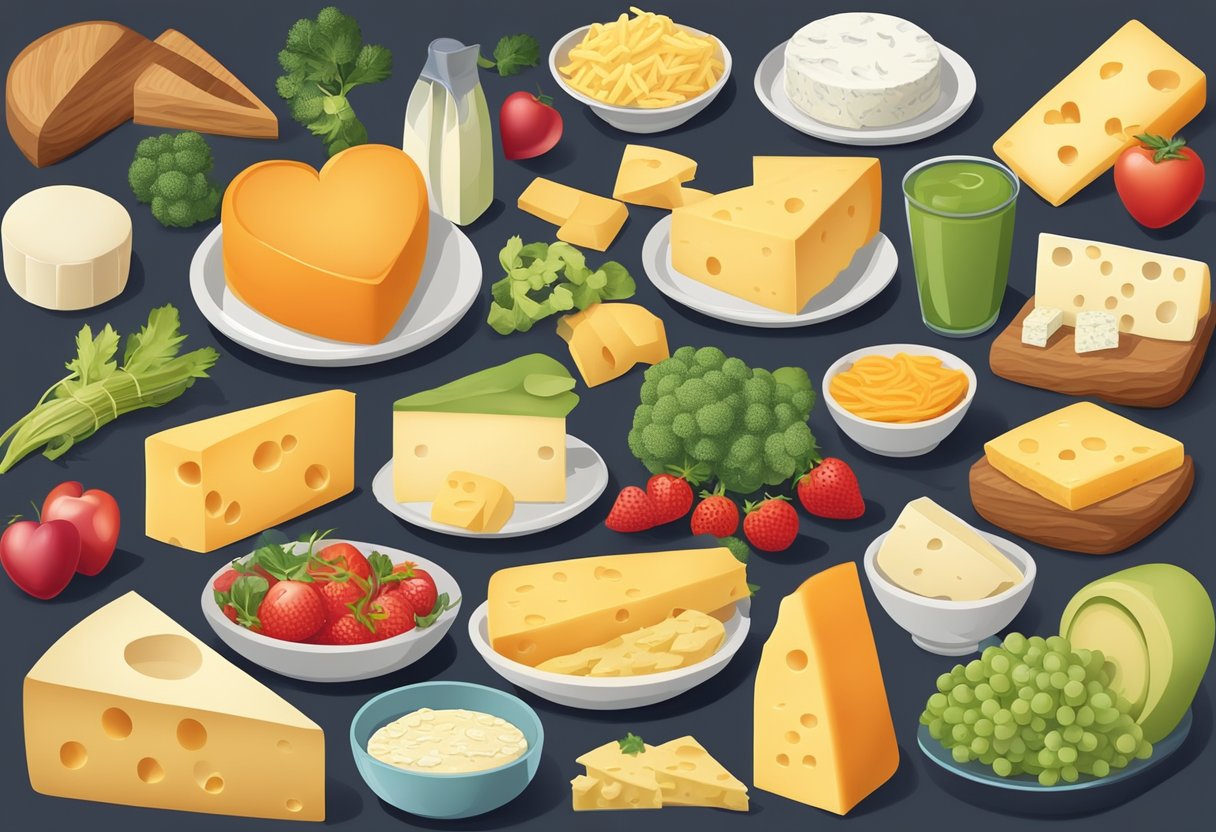
When embracing a heart-healthy diet, we focus on incorporating low-fat cheese varieties in moderation and being mindful of serving sizes.
The Role of Low-Fat Cheese Varieties
Low-fat cheeses can be an important part of a balanced diet, particularly for those concerned with heart health or weight loss. Options like low-fat cottage cheese, reduced-fat cheese, and part-skim mozzarella offer a way to enjoy the taste of cheese without the added saturated fat that is often linked to high cholesterol. The American Heart Association recommends including these types of cheese as part of a healthy dietary pattern.
- Low-Fat Cheeses to Consider:
- Low-fat cottage cheese
- Reduced-fat cheddar
- Part-skim mozzarella
It is important to check labels, as some cheeses marketed as low-fat may still contain high levels of sodium. Consulting with a dietitian can help us understand the nuances of various dairy products in the context of the American diet.
Appropriate Serving Sizes for Cheese
Awareness of portion size is crucial when adding cheese to our diet. A proper serving size aligns with heart-healthy guidelines and aids in maintaining a balanced diet. An appropriate serving size is generally about 1.5 ounces of natural cheese or 2 tablespoons of grated cheese.
- Recommended Serving Sizes:
- Natural cheese: 1.5 ounces
- Grated cheese: 2 tablespoons
To ensure we’re adhering to these sizes, we might use measuring tools or visual comparisons, like equating an ounce of cheese to the size of a pair of dice. Staying diligent with portion control helps us reap the benefits of cheese without compromising our heart health.
Nutrients in Cheese and Overall Health
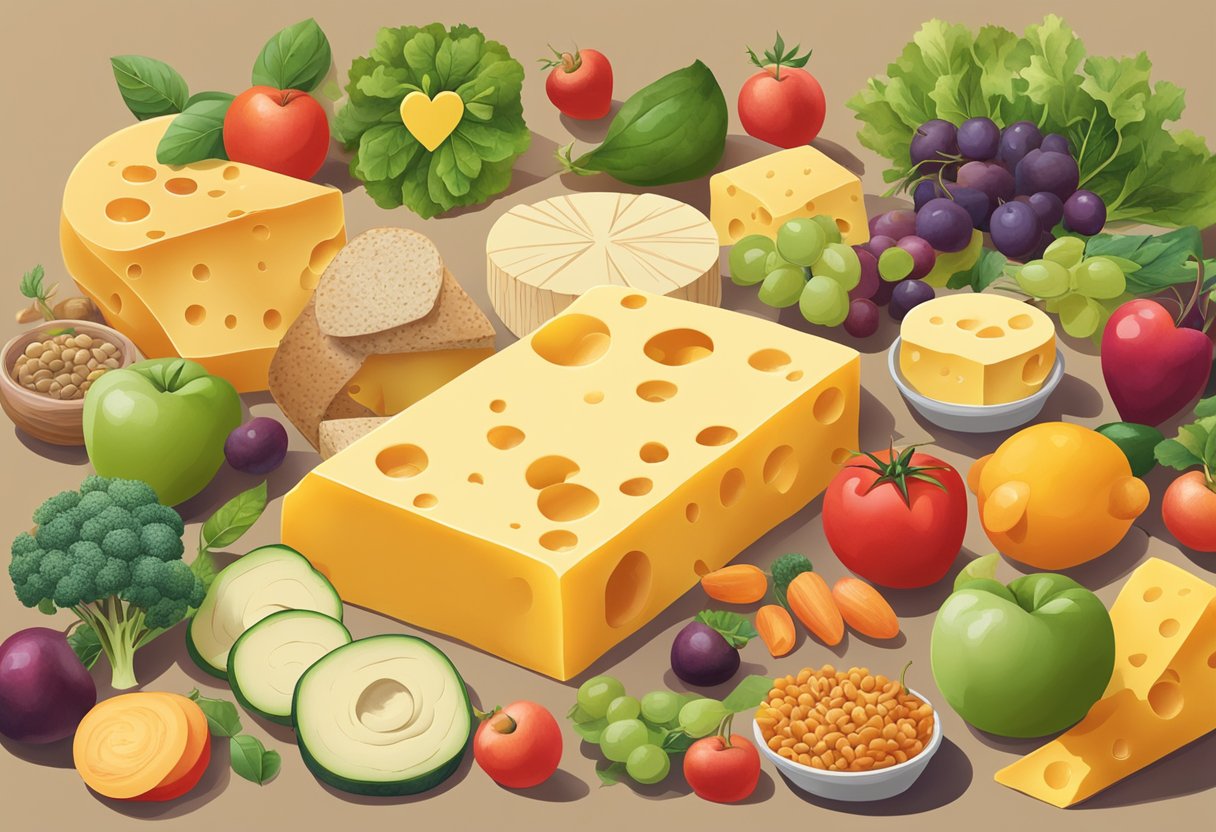
We need to consider several nutrients when it comes to cheese and its impact on our overall health. Cheese is a source of essential nutrients, but for individuals with high cholesterol, specific types should be chosen with care.
Vitamins and Minerals in Cheese
Cheese provides a wealth of vitamins and minerals that are vital for our health. It contains Vitamin B12, necessary for nerve function and the production of DNA, and Vitamin A, which supports the immune system and vision. Phosphorus, found in cheese, works with calcium to build strong bones and teeth. When selecting cheese, opting for low-fat options can provide these benefits while managing fat intake.
- Vitamins: B12, A
- Minerals: Calcium, Phosphorus
Probiotics and Gut Health
Certain cheeses are rich in probiotics, beneficial bacteria that promote gut health. These probiotics help in digestion and maintaining a healthy gut flora. Including probiotic-rich, low-fat cheeses in our daily diet can support our digestive system while also being mindful of cholesterol levels.
- Probiotic Types: Lactobacillus, Bifidobacterium
- Health Impact: Improved digestion, balanced gut flora
Calcium’s Impact on Bone Health
Our bones rely on calcium to remain healthy and strong. Cheese, particularly low-fat options, can be a good source of this important mineral. Regular consumption of calcium-rich foods is integral to maintaining bone density and preventing disorders like osteoporosis. However, balance is key—we must ensure our diet provides sufficient calcium without excess saturated fats that some cheeses contain.
- Daily Calcium Needs: Approximately 1000-1200 mg for adults
- Benefits for Bones: Strengthens bone structure, reduces fracture risk
Lifestyle Considerations for Managing Cholesterol
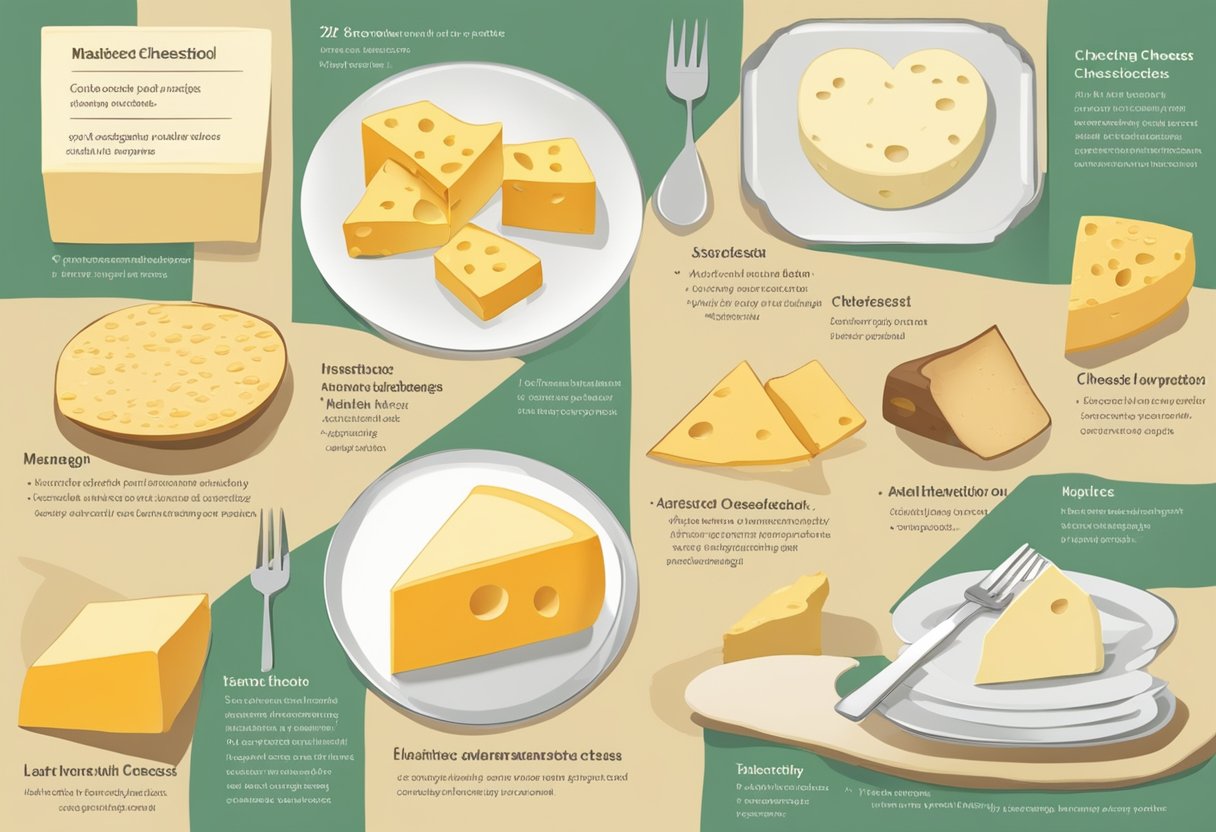
We understand that managing cholesterol involves a holistic approach that comprises both diet and lifestyle changes. By focusing on these areas, we can make a significant impact on our cholesterol levels and overall heart health.
The Importance of a Balanced Diet
A balanced diet is crucial for maintaining healthy cholesterol levels. The American Heart Association recommends a diet rich in fruits, vegetables, whole grains, poultry, fish, nuts, and legumes, while limiting red meat and sugary foods and beverages. We should aim to include fiber-rich foods because soluble fiber can reduce the absorption of cholesterol into our bloodstream.
- Fruits and Vegetables: High in vitamins, minerals, and plant compounds that can reduce inflammation and cholesterol.
- Whole Grains: Oats, barley, and whole wheat contain soluble fiber.
- Healthy Fats: Unsaturated fats such as those found in avocados, olive oil, and nuts are beneficial.
- Lean Protein Sources: Including poultry and fish as part of our diet can help reduce saturated fat intake.
Physical Activity and Weight Management
Regular physical activity is a powerful step we can take to manage cholesterol. Not only does physical activity increase the levels of good HDL cholesterol, but it also aids in weight management, which is a key factor in controlling bad LDL cholesterol.
- Daily Exercise Goal: Aiming for at least 30 minutes of moderate to vigorous exercise, such as brisk walking, cycling, or swimming, most days of the week.
- Importance of Regularity: Consistency with physical activity is more important than intensity for long-term cholesterol management.
Both genetics and lifestyle choices determine our cholesterol levels. While we may not have control over our family history, we do have influence over our diet and exercise routines. Engaging in a healthy lifestyle helps manage risk factors like cholesterol and can counteract genetic predispositions. Our liver processes cholesterol, so when we eat foods high in good fats and fiber, we support its function and reduce the risk of inflammation and cholesterol-related complications.
Culinary Ideas for Health-Conscious Consumers
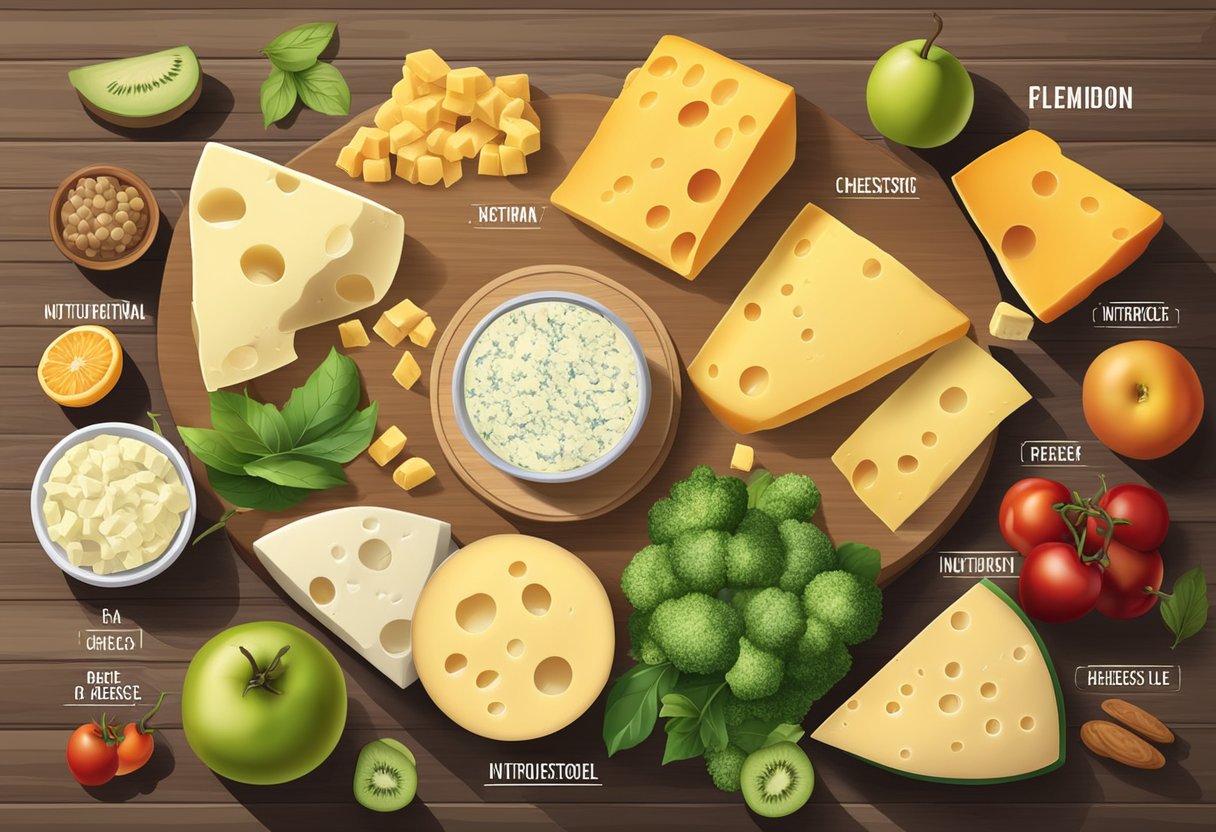
We recognize the importance of balancing flavor with health, particularly when it comes to managing cholesterol levels. Our focus is on the tasty incorporation of low-fat cheese into daily cooking, demonstrating that a health-conscious diet can still be delicious and fulfilling.
Recipes Utilizing Low-Fat Cheese
Low-fat cheeses such as part-skim ricotta, mozzarella, and Swiss cheese offer a compromise—retaining some of the beloved cheese flavors while being mindful of fat content. Here are a couple of dishes we recommend:
Pasta with Part-Skim Ricotta
- Ingredients: Whole grain pasta, 1 cup part-skim ricotta, cherry tomatoes, spinach, garlic, basil.
- Method: Mix part-skim ricotta with freshly cooked pasta, add sautéed cherry tomatoes and spinach. Garnish with basil for a fresh, simple, yet hearty meal.
Frittata with Low-Fat Cheeses
- Ingredients: Egg whites, 1/4 cup low-fat cheddar cheese, mushrooms, bell peppers, onions.
- Method: Combine egg whites with sautéed vegetables, add cheddar cheese, and bake until set. A nutrient-rich start to the day with a touch of indulgence.
Innovative Ways to Enjoy Cheese
It’s our goal to bring a twist to the usual ways of enjoying cheese while keeping your heart health in mind.
Caprese Salad with Low-Fat Mozzarella
- Ingredients: Sliced low-fat mozzarella cheese, ripe tomatoes, fresh basil, balsamic reduction.
- Assembly: Layer the mozzarella and tomatoes, top with basil. Drizzle with balsamic reduction for a light yet flavorful dish that celebrates freshness.
Cheese & Berry Salad
- Ingredients: Mixed greens, 1 tablespoon crumbled low-fat feta or ricotta, assorted berries, almonds, olive oil, and lemon dressing.
- Assembly: Toss the greens and berries together, sprinkle with cheese and almonds, then dress lightly. This dish pairs the creamy texture of cheese with the sweet burst of berries for a satisfying salad that doesn’t weigh down on your conscience or cholesterol levels.
Frequently Asked Questions
We understand the importance of choosing the right cheese for individuals with high cholesterol. Through these FAQs, we aim to provide clarity on cheese options that may fit into a cholesterol-conscious diet.
What are the healthiest cheese options for individuals with high cholesterol?
We recommend cottage cheese and ricotta as these typically have lower saturated fat content. Additionally, we suggest looking for cheeses that are labeled “low-fat” or “reduced-fat.”
How does Swiss cheese rank in terms of cholesterol content?
Swiss cheese generally has less cholesterol compared to other traditional cheeses; a one-ounce serving contains about 26 milligrams of cholesterol. However, portions should still be monitored to manage overall intake.
Is goat cheese considered a better option for those managing their cholesterol levels?
Goat cheese can be considered a better option for those with high cholesterol, as it contains slightly less cholesterol than cow’s milk cheese. The fat globules in goat’s milk are smaller and may be easier to digest.
What impact does consuming ricotta cheese have on cholesterol?
Ricotta cheese, especially when made from skim or part-skim milk, can have a lower cholesterol content. This makes it a potentially better choice for those trying to lower their cholesterol levels.
Can cheddar cheese be included in a low-cholesterol diet?
Yes, cheddar cheese can be part of a low-cholesterol diet if it is consumed in moderation and preferably if a low-fat version is chosen.
Are there any benefits of choosing mozzarella when monitoring cholesterol intake?
Mozzarella, particularly part-skim versions, can be a good choice for managing cholesterol as it is typically lower in saturated fat than many other cheeses, making it a better option for a cholesterol-conscious diet.



